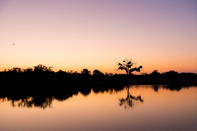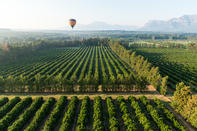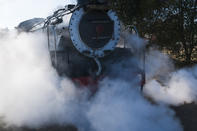Named After Hat River
The farm of Hoedspruit’s first owner, Dawid Johannes Joubert, arrived in South Africa’s Lowveld in 1844, choosing to settle on a farm between the Blyde and Zandspruit Rivers. Joubert registered the farm on 5 May 1848 at the Ohrigstad land office.

The original farm of Hoedspruit is surrounded by towns such as Jonkmanspruit, Welverdiend and Driehoek. These farms were established in the 1850s when Ohrigstad was expanding.
It was decided that only older settlers should reside in and around the immediate area. Settlers younger than 45 were encouraged to move further away. A group of young men left Ohrigstad and settled in those farms around the original Hoedspruit farm, giving them the names they have today.
Hoedspruit’s name was given to it by its first owner, after he lost his hat in the Zandspruit River when a major cloud burst caused the river to flood. Hats in those days were a precious commodity, being a farmer’s first line of defence against the hot African sun, and their availability was not as widespread as it is today. The loss of his hat being such a momentous occasion, Joubert named the river and farm Hoedspruit, meaning “hat river” after the river that stole his hat.
Divided into Smaller Farms

In addition to Hoedspruit, Joubert had another farm in Ohrigstad. It was on this Ohrigstad farm that he was killed by a leopard in 1860.
While Hoedspruit was still in the possession of Joubert, a dispute arose between Lourenço Marques (Maputo) and the Transvaal Republic about the location of the border between Mozambique and South Africa. The Portuguese in Lourenço Marques argued that the border lay in the Drakensberg Mountains, while settlers in South Africa insisted that the border was, in fact, the Lebombo Mountains.
To settle the dispute, then president of the Transvaal Republic, Paul Kruger, ordered a land survey be done so that the official border could be assessed and finalised. European land surveyors, including three men, named Von Wielligh (after whom a baobab tree in the Kruger National Park was named), Vos and Gillfillan. While in South Africa the surveyors were also ordered by Kruger to set out boundaries for the farms along the Drakensberg mountains.
As a result of this, many of the larger farms, including Hoedspruit, were divided into smaller farms, although for the most part, they still belonged to and were run by their original owners. The surveyors were also in charge of naming the new farms and, having limited local knowledge, named the farms after the European cities they were familiar with. This is how South Africa ended up with farm names like Essex, Madrid, Berlin, Richmond, Chester, Moscow, Dublin and Dundee.
Hoedspruit Station

Did You Know?: The Selati Railway was built in 1910, traversing over Hoedspruit farm. At first, the railway was used to transport goods, but over time passenger travel also became popular. There was a growing need for stops where passengers could get on and off trains, and in response, five main stops opened alongside the Hoedspruit farm, namely Klaserie Town, Kapama, Hoedspruit, Olifant tank and Mica. In those days the old steam trains would stop at each and every stop.
The Hoedspruit station, interestingly enough, is not situated on the official farm of Hoedspruit, but rather on the farm of Berlin. This happened after a train driver offloading the materials to be used to build the station unintentionally stopped in the wrong place. Given the instruction to stop after “the third bend by the large Knobthorn tree”, the driver mistakenly chose the wrong tree, stopped and offloaded the materials. The station was then built on the wrong spot. Only years later did anyone notice that the Hoedspruit station was not in Hoedspruit at all.